Minimum Business Continuity Objective (MBCO)

Corporate and Business Unit Minimum Business Continuity Objective (MBCO) – Singapore Children’s Society
The Minimum Business Continuity Objective (MBCO) defines the minimum level of services and products that an organisation must deliver during a disruption to meet its operational, legal, and stakeholder obligations.![[BCM] [SCS] [E3][BIA] Corporate MBCO](https://no-cache.hubspot.com/cta/default/3893111/5765a112-1ec9-4c21-8c73-f7a431bd4c0b.png)
It establishes a measurable threshold that guides recovery priorities, resource allocation, and continuity planning.
For the Singapore Children’s Society (SCS), whose mission is to protect and nurture children, youth, and families in need, sustaining core services during a disruption is crucial.
Any prolonged interruption to case management, family support, or residential services could compromise the welfare of vulnerable groups.
Therefore, the Corporate MBCO and Business Unit MBCO provide a structured benchmark for determining what essential services must continue at a minimum acceptable level.
 This chapter outlines the Corporate MBCO for SCS and further defines the Business Unit MBCO for each Critical Business Function (CBF). These objectives will guide response, recovery, and resource prioritisation across all programmes and centres during disruptive events.
This chapter outlines the Corporate MBCO for SCS and further defines the Business Unit MBCO for each Critical Business Function (CBF). These objectives will guide response, recovery, and resource prioritisation across all programmes and centres during disruptive events.
Corporate Minimum Business Continuity Objective (Corporate MBCO)
The Corporate MBCO represents the organisation-wide minimum level of service required to protect beneficiaries’ welfare, comply with regulatory and ethical obligations, and preserve stakeholder confidence.
For Singapore Children’s Society, the Corporate MBCO is defined as follows:
Corporate MBCO Statement
“Singapore Children’s Society shall maintain a minimum of 60% operational capacity across all essential child protection, family support, youth engagement, and residential care functions within 72 hours of a disruption, to ensure the continued safety, welfare, and engagement of its beneficiaries, while sustaining critical financial, data, and communication capabilities.”
This Corporate MBCO ensures that even during disruptions (e.g. pandemic lockdowns, IT system outages, facility incidents, or resource shortages), SCS can continue delivering its mission-critical services with sufficient quality and reach to safeguard its core beneficiaries and uphold public trust.
Business Unit Minimum Business Continuity Objectives (Business Unit MBCO)
The following table defines the specific Business Unit MBCOs for each Critical Business Function (CBF) identified by SCS. Each MBCO is measurable, time-bound, and directly aligned with the Corporate MBCO.
|
CBF Code |
Critical Business Function |
Business Unit MBCO (Minimum Acceptable Service Level) |
|
CBF-1 |
Case Management and Child Protection Services |
Resume at least 70% of case management and child protection operations within 24 hours to ensure child safety and continuity of urgent interventions. |
|
CBF-2 |
Family and Community Support Services |
Maintain 50% of family counselling and community outreach programmes within 72 hours through alternate sites or remote delivery. |
|
CBF-3 |
Youth Engagement and Development Programmes |
Resume 60% of youth programmes within 5 days, using virtual platforms or off-site activities, ensuring continued engagement and developmental support. |
|
CBF-4 |
Residential and Drop-In Centre Operations |
Ensure uninterrupted operations for 100% of residential facilities, with contingency staffing and emergency supplies maintained at all times. |
|
CBF-5 |
Donor Management and Fundraising Activities |
Restore essential donor management and donation processing systems within five working days to sustain financial inflow and donor communication. |
|
CBF-6 |
Finance and Grant Administration |
Reinstate critical payment processing and grant management functions within 48 hours to ensure financial continuity and compliance. |
|
CBF-7 |
Information Management and Data Protection |
Achieve 95% system and data recovery within 24 hours, ensuring continuity of confidential case data and compliance with PDPA. |
|
CBF-8 |
Human Resource and Volunteer Management |
Maintain essential HR operations (payroll, emergency staffing, and volunteer coordination) within 72 hours to support service continuity. |
|
CBF-9 |
Communications and Public Relations |
Restore core communication channels (website, social media, hotline) within 24 hours to maintain stakeholder confidence and beneficiary access to information. |
|
CBF-10 |
Facilities and Safety Management |
Ensure operational safety and building accessibility within 12 hours for affected centres, enabling rapid resumption of essential programmes. |
Relationship Between Corporate and Business Unit MBCOs
The Corporate MBCO serves as the overarching standard, while each Business Unit MBCO contributes to meeting this corporate threshold. Collectively, these objectives ensure that even during a disruption:
- Child safety and welfare remain the top priority.
- Mission-critical services are delivered at acceptable levels.
- Dependencies between functions (e.g., case management and IT systems) are coordinated.
- The organisation can demonstrate due diligence to regulators, donors, and the public.
The Corporate and Business Unit Minimum Business Continuity Objectives provide the Singapore Children’s Society with a clear, measurable benchmark for continuity planning and operational resilience.
By quantifying the minimum acceptable level of service for each critical function, SCS can prioritise recovery actions, allocate resources effectively, and maintain stakeholder confidence during crises.
These objectives also serve as key inputs into Business Continuity Plans (BCPs), recovery strategy design, and testing exercises—ensuring that SCS remains steadfast in fulfilling its mission of protecting and nurturing every child, even in the face of adversity.
More Information About Business Continuity Management Courses

 To learn more about the course and schedule, click the buttons below for the BCM-300 Business Continuity Management Implementer [B-3] course and the BCM-5000 Business Continuity Management Expert Implementer [B-5].
To learn more about the course and schedule, click the buttons below for the BCM-300 Business Continuity Management Implementer [B-3] course and the BCM-5000 Business Continuity Management Expert Implementer [B-5].
![Register [BL-B-3]*](https://no-cache.hubspot.com/cta/default/3893111/ac6cf073-4cdd-4541-91ed-889f731d5076.png) |
 |
 |
 |
 |
 |
![FAQ [BL-B-3]](https://no-cache.hubspot.com/cta/default/3893111/b3824ba1-7aa1-4eb6-bef8-94f57121c5ae.png) |
If you have any questions, click to contact us.
|
 |
 |
 |
 |




![[BCM] [Thin Banner] Summing Up](https://blog.bcm-institute.org/hs-fs/hubfs/BCM%20Generic%20Banner/%5BBCM%5D%20%5BThin%20Banner%5D%20Summing%20Up.png?width=1920&height=250&name=%5BBCM%5D%20%5BThin%20Banner%5D%20Summing%20Up.png)
![Email to Sales Team [BCM Institute]](https://no-cache.hubspot.com/cta/default/3893111/3c53daeb-2836-4843-b0e0-645baee2ab9e.png)

